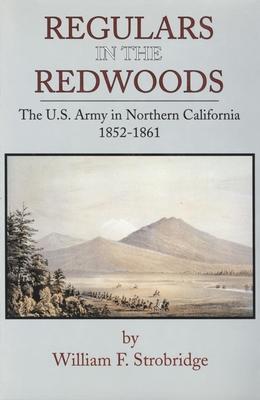The clash between settlers and Indians during California's early statehood has been marred by myth and stereotype. This new work, based on original research, explores how animosities became a battle for land and sustenance as competition for prosperity heightened. California's tumultuous era between discovery of gold and the Civil War brought an abrupt admittance to statehood in 1850 and the replacement of military government standards with new political aims. Little was left for Indian sustenance. Amid the flux, between California citizens and California Indians, was the Regular Army.
Careful study of original source material by the author illuminates the complicated role of the Regulars in frontier history. This detailed account of the Regular Army's attempts to maintain peace replaces the inadequate portrayal of the Indian fighting Army during a neglected period in California military history.
Governor McDougal's plea for protection of American citizens from Indian hostilities was answered with the Regular Army. Commanders soon discovered that settlers were far from defenseless. Regulars in the Redwoods chronicles the transformation of forts originally constructed for coastal defense into centers for improving Indian relations and curbing violence.
So-called volunteer armies complicated the Regular Army's task of heightening rivalries between Indians and American citizens. A complete account of Regular commanders' attempt to end the attacks and counter-attacks is the thread of this studious text.
As reservation killings became near daily occurrences near the end of the decade, underfed Indians escaped. Reservations often were misused to achieve California officials' goals, providing little refuge for indigenous peoples. This, the first discussion in book form of Regular army complaints against ineffectual and delinquent agents, shows how strained relations between Army officers and Indian officials raised another barrier to the Army's containment of violence.
Renegade white antagonists, assassins, and murderers were not held accountable for their crimes. The Army's lack of legal authority complicated its management of forces spread thin across northern California and Oregon. Additionally, an account of settlers false report of Indian hostility and the continuing challenge to track Indian thieves before mob parties could organize is related.
Crook, Wright, Buchanan, Judah, Johnson, and other commanders are shown keeping a high profile in their campaign for peace. Officers displayed military strength and established relations with Indian leaders to ward off indiscriminant use of fire power and prevent antagonism. Forts Reading, Humboldt, Jones, Crook, and Ter-waw became the hubs of mitigating expeditions in all directions.
Army life in northern California often drove enlisted men to desert ranks in search of a more stable civilian life. This is also the history of Regulars who went months without pay, adequate heat, suitable food, and sufficient tent structures. Short-handed, sent marching across the state, and later dissuaded by the possibility of fighting those they believed to have been wronged, soldiers deserted.
